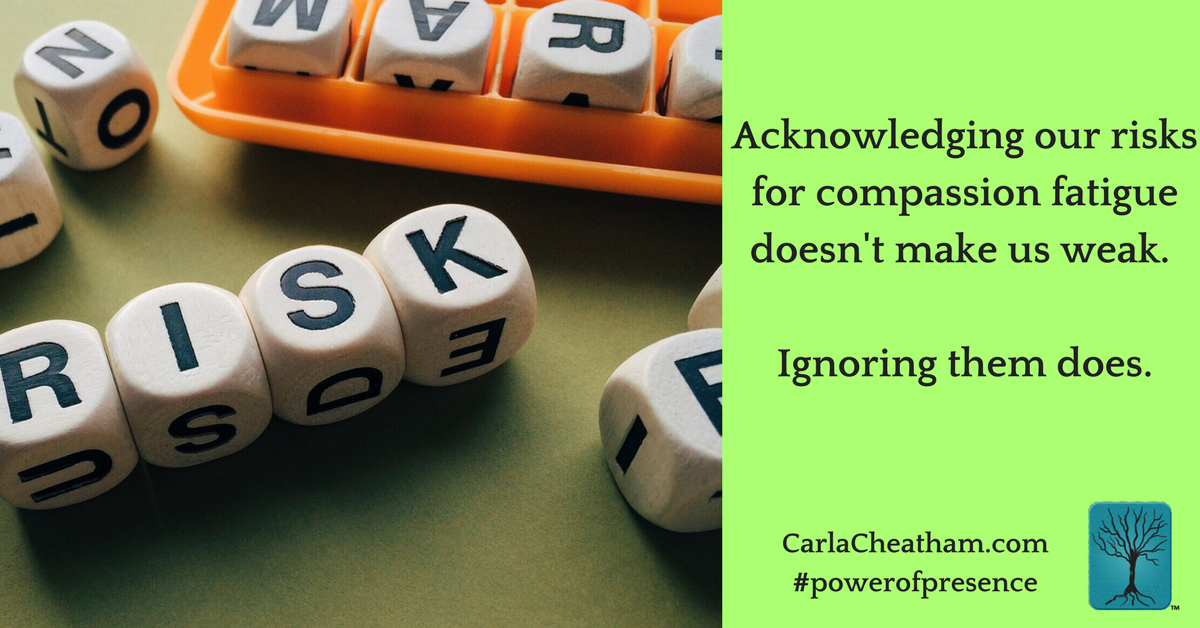
Retaining Emotional Health in Professional Caregiving
Part IV: More About Symptoms and Risks
This is an on-going series from my presentations on the use of ethical boundaries and resilience to maintain both healthy professionals and teams as well as prevent compassion fatigue and burnout.
Most of us, if we are honest, have experienced many of these over the course of our lives:
Feeling helpless
Feeling more / less sensitive to patients’ and families’ stories or emotions.
Being or feeling less accomplished and effective
Lowered self-esteem
Harsh or on-going blame and criticism of oneself or others
Attempts to control others or situations
Working more / less
Holding overly ambitious expectations of oneself or others
Persistent feelings of depression of hopelessness
Feeling out of balance
Misplaced anger, irritability, and/or frustration with oneself or others
Depression
Inability or decreased desire to engage in normally enjoyable activities
Chronic lateness
Sleeping more / less
Feeling exhausted even when getting adequate sleep
Gastrointestinal issues
Having an off day or week, getting overwhelmed when life gets all too life-y for a brief period of time, struggling during a full moon or when Mercury is retrograde are all natural responses to life. They are signals to pay attention, increase our self-care, maybe take a day off to re-charge and re-gain our perspective.
When those symptoms intrude on our ability to conduct our lives and/or persist over the course of weeks and months, it is also a natural part of being human, yet one that requires even more focused attention and care. Bad days pass in time. Burnout, compassion fatigue, depression, etc. will too, but usually need and deserve extra support in order to do so.
If this list feels too familiar or describes someone with whom you work or for whom you care, know that all is not lost. There are steps to take that can support us in preventing and even treating compassion fatigue when it does arise, as I’ll begin discussing in the next post. For now, let’s look a bit more at the risk factors involved.
In one study of hospice nurses by Abendroth & Flannery (2006) stress, trauma, anxiety, life demands, and excessive empathy were the key determinants of compassion fatigue (their composite multiple regression model was 91% predictive, P < .001).
A 2008 review by Sabo found similar results, as well as risks for vicarious trauma to include:
*individual characteristics—previous personal trauma, coping strategies, unrealistic self-expectations
*social and community context
*physical, organizational, structural and contextual work environment and
*work-related attitudes—i.e. the “need to fulfill all the needs of the clients”.
Regarding the risk factor of having experienced personal trauma, one young nursing student approached me, after a guest-lecture on the topic, in tears. She told me the 30-second version of her past and then, with a trembling lower lip asked a question stemming from her deepest fears, “Am I doomed to never be able to be a good nurse for patients and families because of all I’ve been through?!”
Her wise instructor smiled in understanding and placed a supportive arm around her shoulders and nodded in affirmation as I responded,
“Oh, honey, no! That’s not it. The fact that you’re asking yourself the question is a good indicator you’re aware enough to be mindful of it when your own stuff gets in the way. Besides, it’s like someone having a predisposition to diabetes—it doesn’t necessarily mean they’ll become diabetic; it just means they have to be a little more careful than the average bear.”
The most important thing for all of us is to be honest with ourselves and each other, to practice being self-aware, and to frequently check in and ask ourselves the right questions. None of us got into this field to be dangerous, so we must be on guard to protect ourselves and those whom we are called to serve in a way that sets none of us up to fail.
Being in intimate space with patients and families may also provide a greater risk for compassion fatigue, along with being a first responder or a sustained responder, experiencing compounded grief, working extended hours, working in intimate space and/or providing intimate care, as well as internalizing patients’ suffering according to a review by Boyle (2011).
As many of these variables are not controllable, but are the very nature of the work we may do, it is important to focus on those areas we are able to change, which will be the focus of most of this series. To place our energy anywhere else is to set ourselves up for losing battle.
As I wrote in the last post issues of work overload, values conflict, lack of reward, lack of fairness, lack of community, and lack of control have been demonstrated as being of particular importance in the development of burnout (Maslach, Schaufeli, & Leiter, 2001), with control being of particular importance.
Maintaining a focus on the variables we can control and caring well for ourselves in the face of the ones we cannot is the greatest piece of advice I could give in this series. When we bang ourselves up pushing against the tide, we serve no one well. When we waste our time blaming and complaining we become part of the problem and avoid spending the energy, instead, finding solutions.
We certainly need space to vent and grieve, and there is nothing wrong with naming what we believe to be unacceptable. We simply must keep such times in check so that we do not continually live there. Again, I’ll say much more about this dynamic in the posts to come.
For now, here is a great website from the Compassion Fatigue Awareness Project with tools for considering one’s own current state. With self-assessments you can take on-line or print, you can score yourself on 3 different measures—the Professional Quality of Life (ProQol) Self-Test, Compassion Fatigue Self-Test: An Assessment, and the Life Stress Self-Test.
As you consider your results, also consider finding safe and supportive colleagues with whom you can discuss your findings. Being vulnerable enough to admit when and where we are struggling is perhaps our greatest tool, since no healing can ever occur if we do not join the rest of the mere mortals on the planet in accepting that we are not, in fact, super human.
For what it’s worth.
Peace,
Carla
REFERENCES:
Abendroth, M. & Flannery, J. (2006). Predicting the Risk of Compassion Fatigue: A Study of Hospice Nurses. Journal of Hospice and Palliative Nursing, 8(6) pp. 346-356.
Boyle, DA (2011). “Countering Compassion Fatigue: A Requisite Nursing Agenda” The Online Journal of Issues in Nursing, Vol 16 (1).
Maslach, C.; Schaufeli, W. B.; Leiter, M. P. (2001). “Job burnout”. In S. T. Fiske, D. L.
Sabo, BM (2008). “Adverse psychosocial consequences: Compassion fatigue, burnout and vicarious traumatization: Are nurses who provide palliative and hematological cancer care vulnerable?” Indian Journal of Palliative Care, Vol 14:1 pp. 23-29.
 Rev. Carla Cheatham, MA, MDiv, PhD, TRT has served hospices as a chaplain and bereavement coordinator. She’s the Section Leader for the Spiritual Caregivers Section of the National Hospice and Palliative Care Organization and an adjunct professor at the Seminary of the Southwest and an Affiliate Associate Professor at the University of Maryland. Through her Carla Cheatham Consulting Group, Carla provides training and consulting for professional caregivers nationwide. She is the author of Hospice Whispers: Stories of Life and its companion volume, Sharing Our Stories: A Hospice Whispers Grief Support Workbook. Her next book, On Showing Up with Suffering: Others’ and Our Own, is set to publish in 2017.
Rev. Carla Cheatham, MA, MDiv, PhD, TRT has served hospices as a chaplain and bereavement coordinator. She’s the Section Leader for the Spiritual Caregivers Section of the National Hospice and Palliative Care Organization and an adjunct professor at the Seminary of the Southwest and an Affiliate Associate Professor at the University of Maryland. Through her Carla Cheatham Consulting Group, Carla provides training and consulting for professional caregivers nationwide. She is the author of Hospice Whispers: Stories of Life and its companion volume, Sharing Our Stories: A Hospice Whispers Grief Support Workbook. Her next book, On Showing Up with Suffering: Others’ and Our Own, is set to publish in 2017.

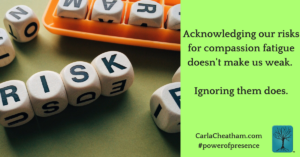

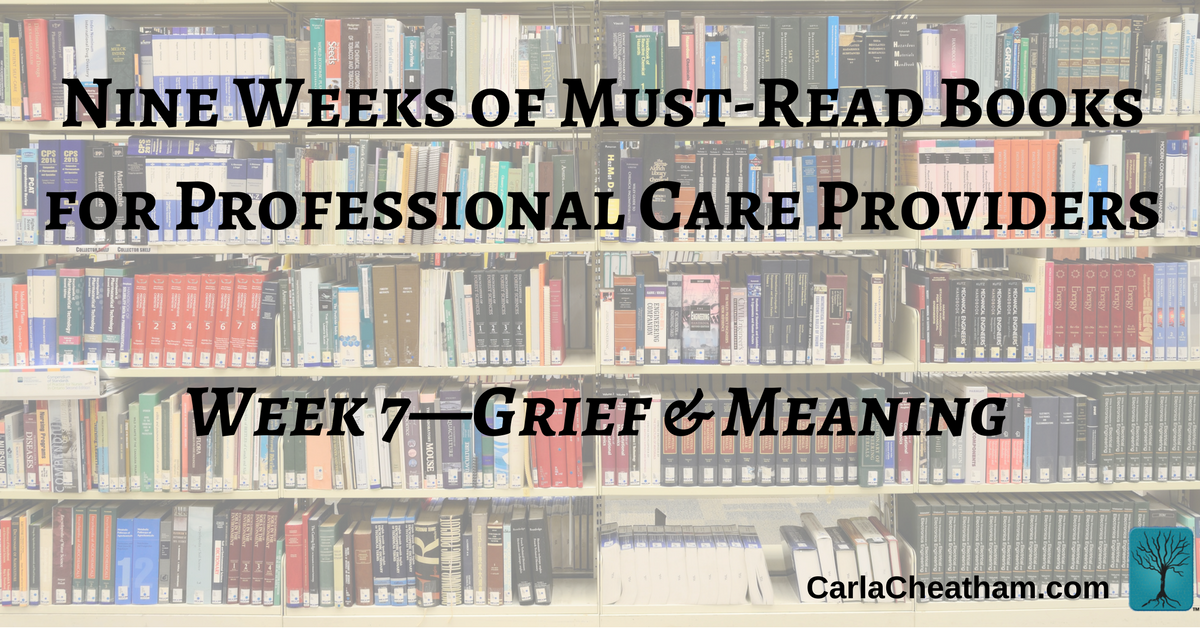
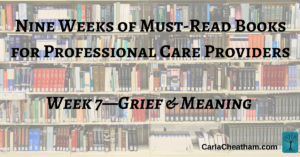
 Rev. Carla Cheatham, MA, MDiv, PhD, TRT has served hospices as a chaplain and bereavement coordinator. She’s the Section Leader for the Spiritual Caregivers Section of the National Hospice and Palliative Care Organization and an adjunct professor at the Seminary of the Southwest. Through her
Rev. Carla Cheatham, MA, MDiv, PhD, TRT has served hospices as a chaplain and bereavement coordinator. She’s the Section Leader for the Spiritual Caregivers Section of the National Hospice and Palliative Care Organization and an adjunct professor at the Seminary of the Southwest. Through her 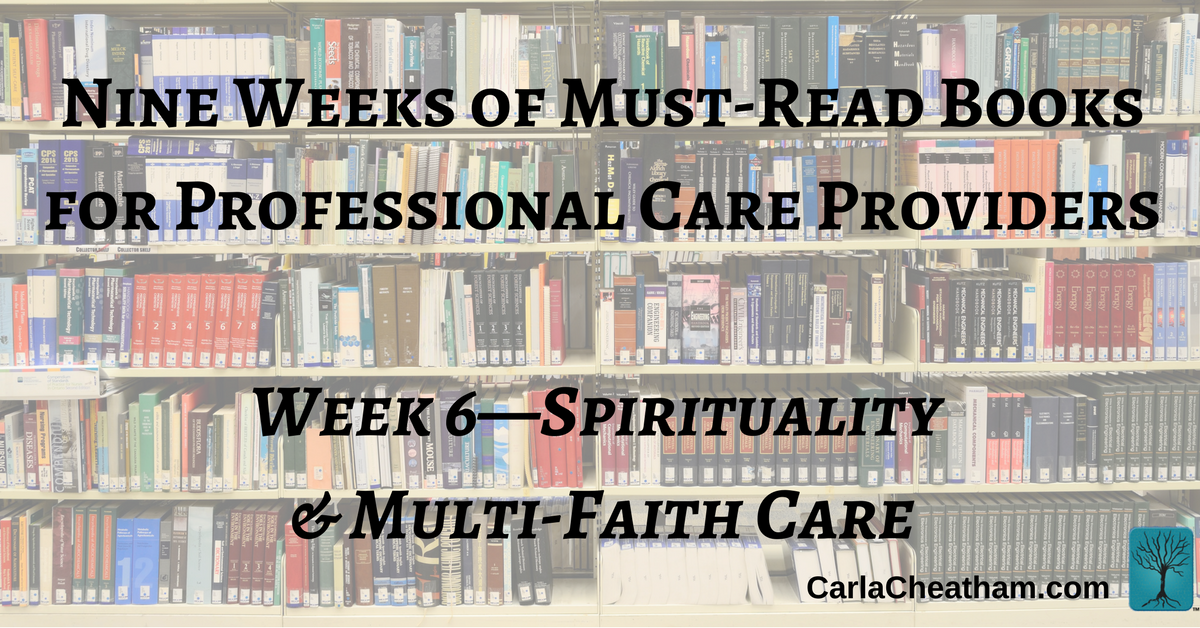
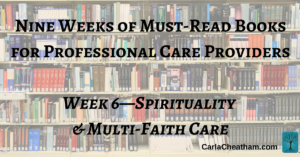
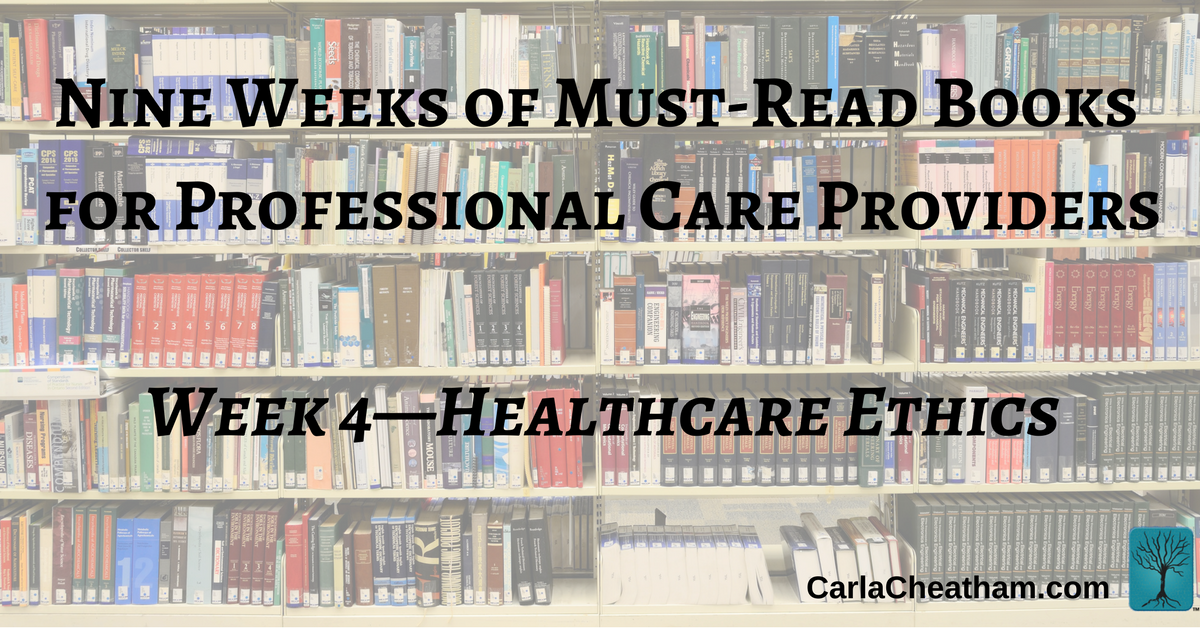
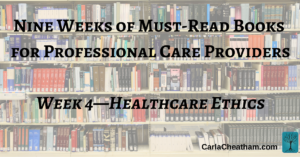
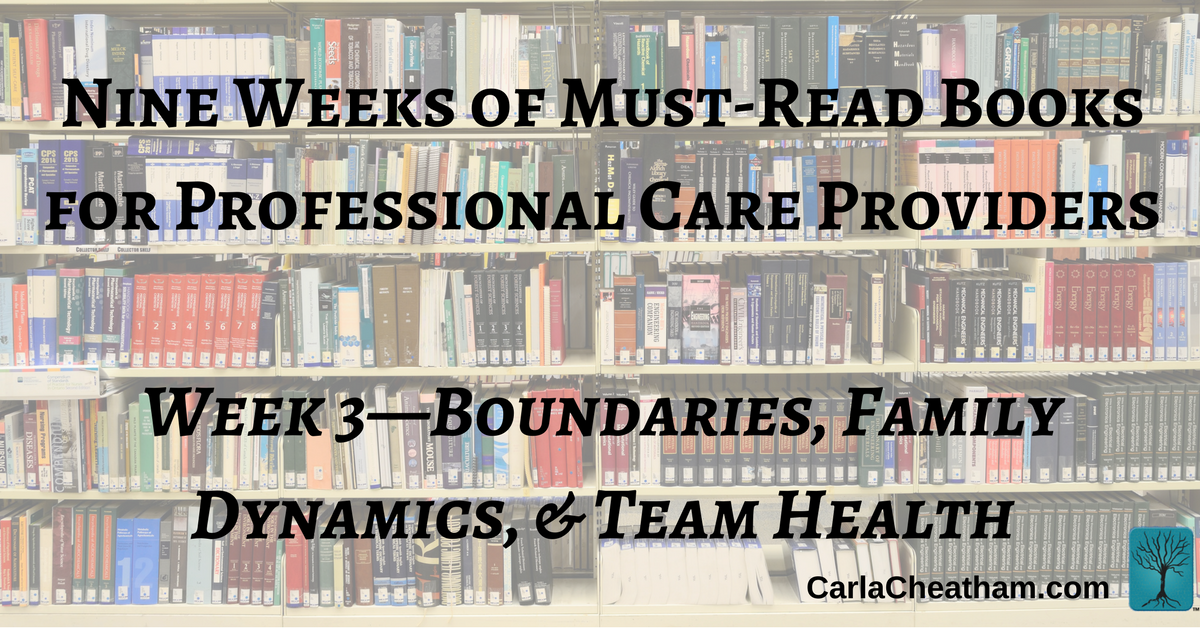
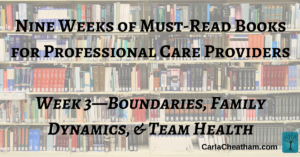
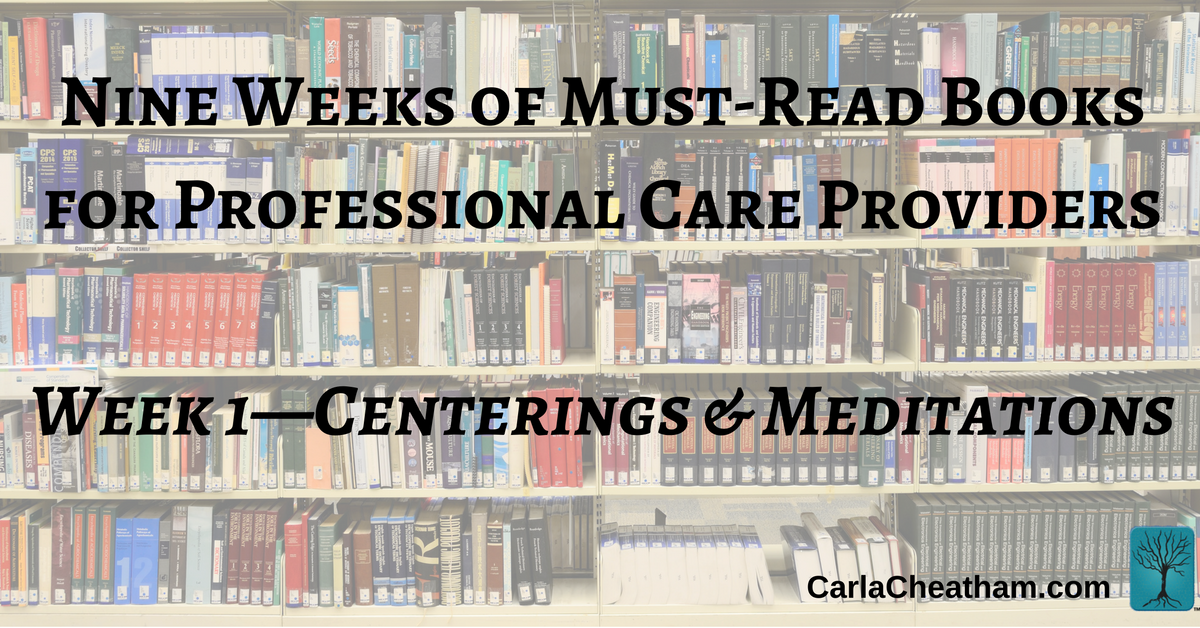
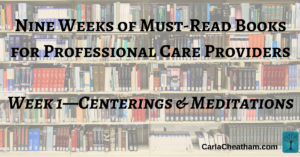
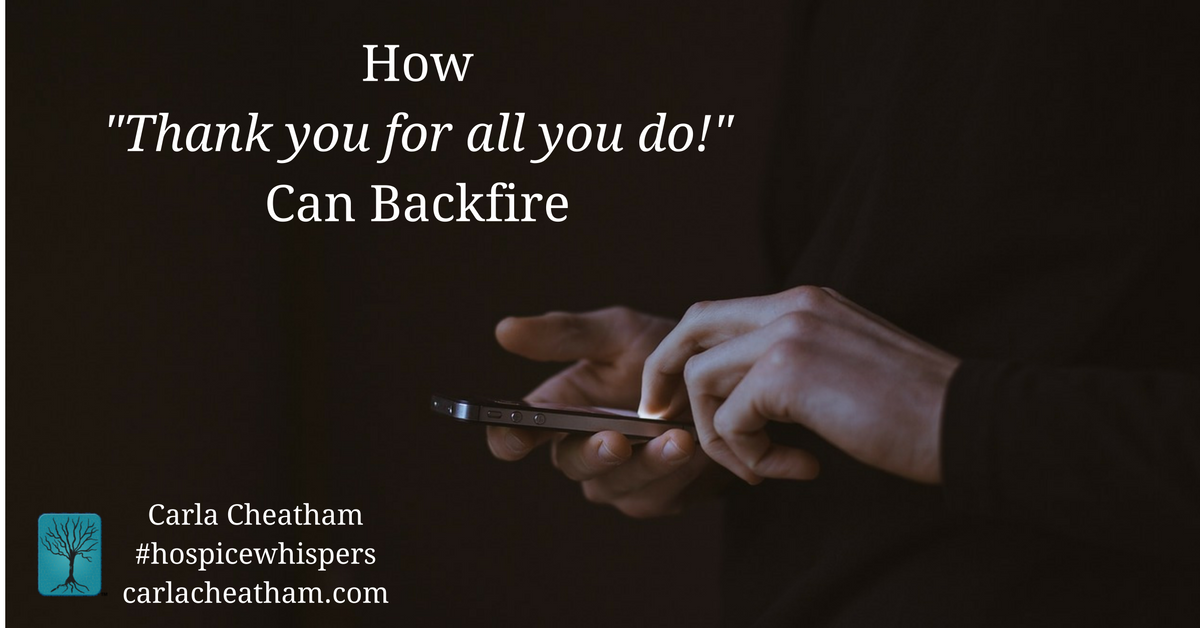
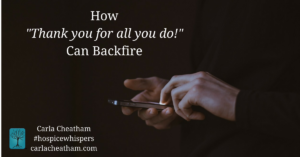

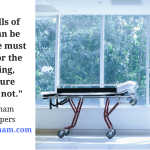

 After a career in social services and advanced degrees in Psychology, Health Education, and Divinity, Carla began working in hospice as a chaplain and bereavement coordinator. She now trains healthcare staff on a multitude of topics through her own
After a career in social services and advanced degrees in Psychology, Health Education, and Divinity, Carla began working in hospice as a chaplain and bereavement coordinator. She now trains healthcare staff on a multitude of topics through her own 



